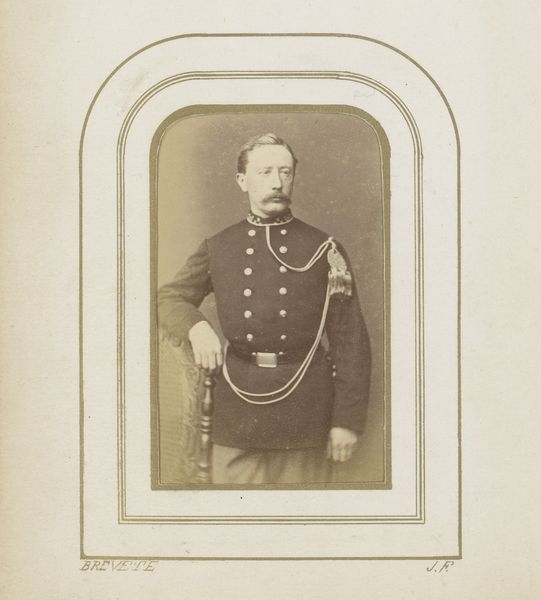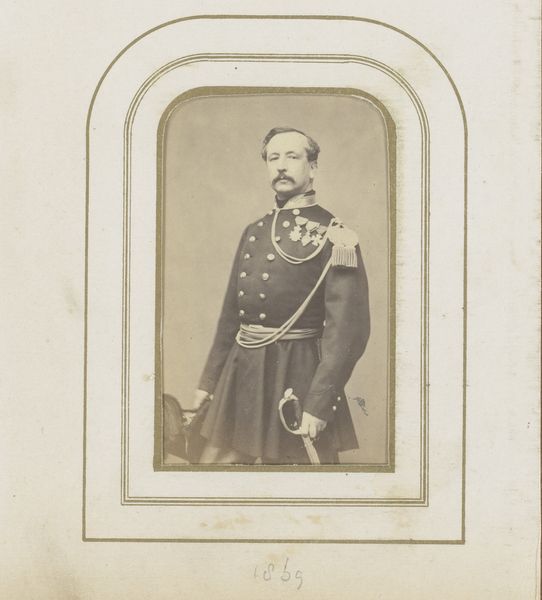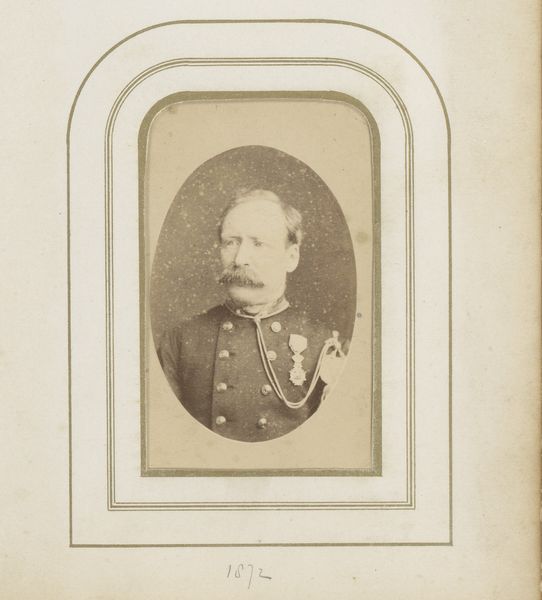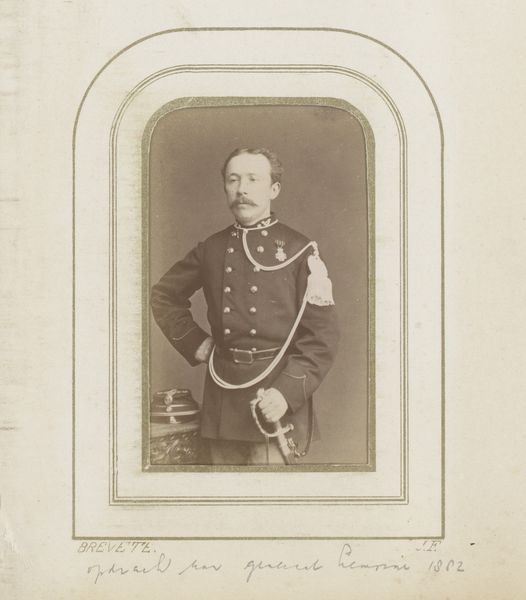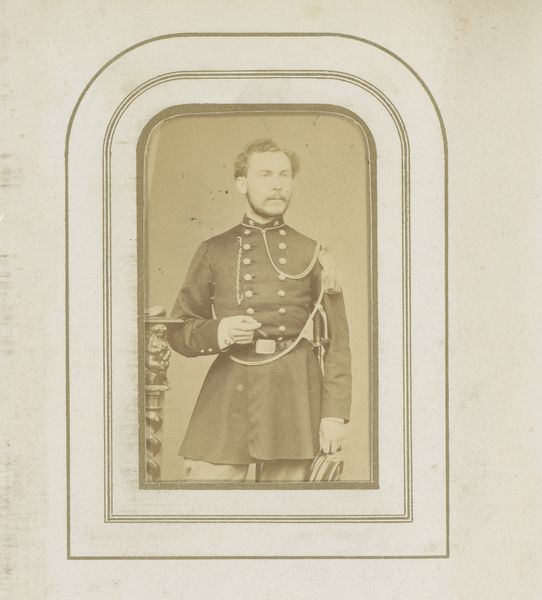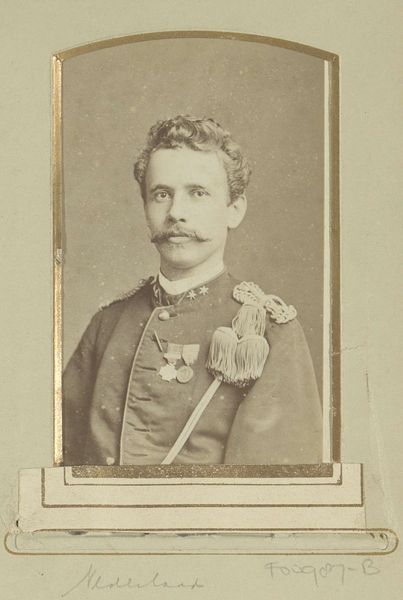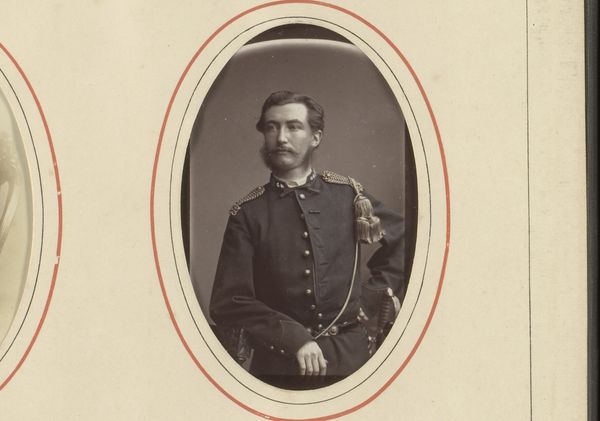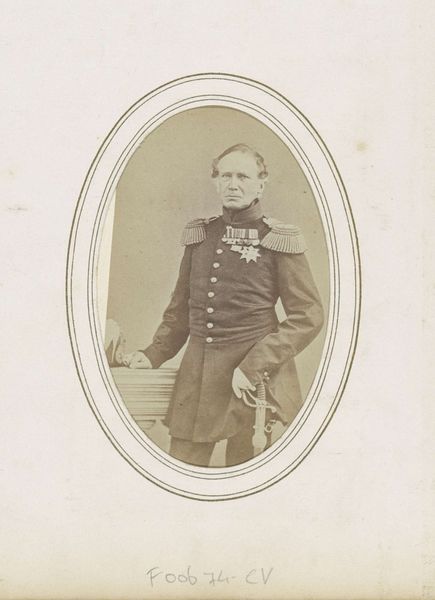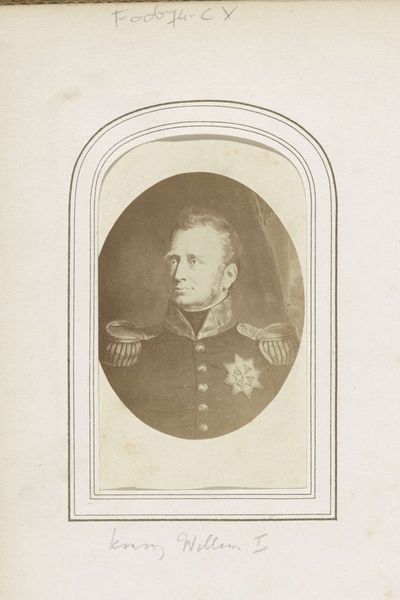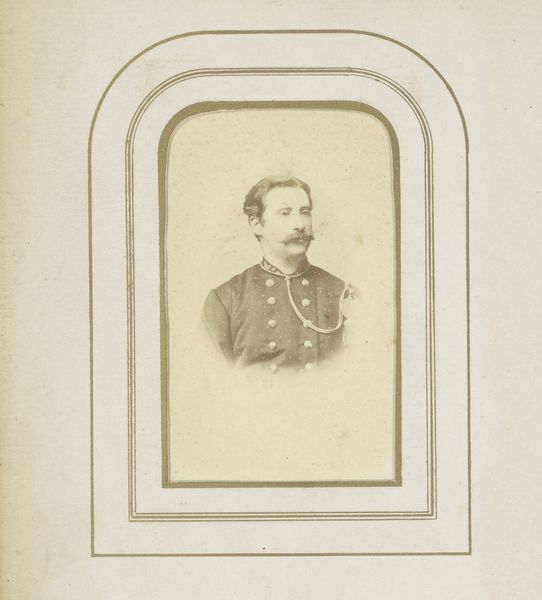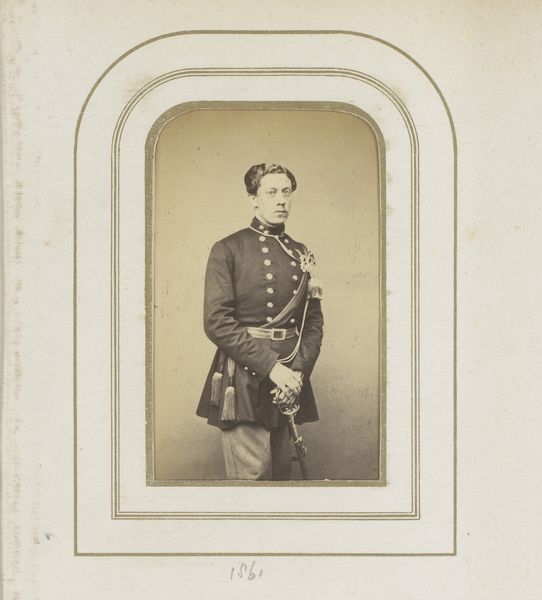
Dimensions: height 85 mm, width 55 mm, height 105 mm, width 63 mm
Copyright: Rijks Museum: Open Domain
Editor: We're looking at a photo reproduction by De Lavieter & Co., "Fotoreproductie van een prent van een man in militair kostuum," created between 1870 and 1903. It depicts a man in military attire. It's striking how formal and composed he appears. What social dynamics might have influenced this representation? Curator: This daguerreotype offers a lens through which to examine the construction of masculinity and power in the late 19th century. Consider the military uniform: what does it signify in terms of societal roles and expectations, particularly around notions of duty, honor, and national identity? How does his composed gaze engage with or subvert those ideas? Editor: So, it's less about just a portrait, and more about how he is presented as a member of the military class? Curator: Precisely. Think about the rise of nationalism and militarism during that period. Photography became a tool for projecting an image of strength and authority. Ask yourself: who had access to such representation, and what narratives were intentionally or unintentionally being reinforced through these images? And how does this formal approach contrast with, say, more candid contemporary snapshots of soldiers? Editor: It’s fascinating to think about photography as a tool for nation-building and shaping public perception, especially regarding military authority. Curator: Exactly. Examining such imagery through an intersectional lens reveals the complex ways in which identity, power, and representation were intertwined. Editor: This conversation has really broadened my understanding of this image beyond its face value. Curator: Indeed, analyzing art in this manner helps us unpack the historical and political contexts that shaped our world.
Comments
No comments
Be the first to comment and join the conversation on the ultimate creative platform.
